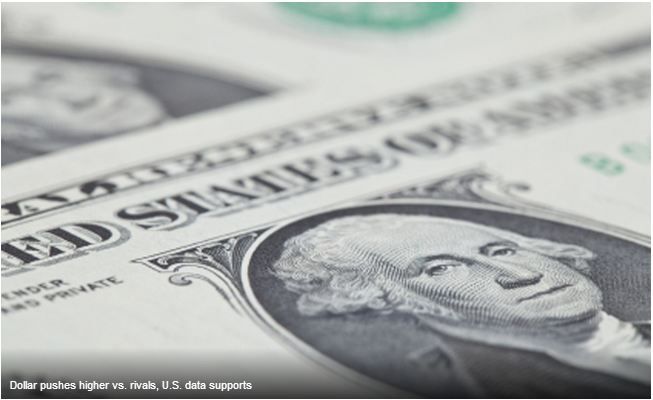The dollar extended gains against other major currencies on Thursday, helped by the release of upbeat U.S. jobless claims data, although comments by U.S. President Donald Trump continued to weigh.
EUR/USD slid 0.36% to 1.0627, pulling away from a one-week high of 1.0678 hit overnight.
The U.S. Labor Department said that initial jobless claims fell by 1,000 to 234,000 for the week ended April 8 from the prior week’s revised 235,000. Analysts had expected jobless claims to rise to 245,000 last week.
The greenback initially weakened after U.S. President Donald Trump told the Wall Street Journal on Wednesday that the dollar “is getting too strong” and that he would prefer the Federal Reserve to keep interest rates low.
Markets were also jittery after President Trump said the United States’ relationship with Moscow “may be at an all-time low.”
Trump’s comments came after he ordered a missile attack on Syria to punish the government’s suspected use of poison gas. Russia condemned the U.S. action.
Elsewhere, GBP/USD was little changed at 1.2533.
USD/JPY edged up 0.17% to 109.22, while USD/CHF rose 0.29% to trade at 1.0055.
The Australian and New Zealand dollars were stronger, with AUD/USD up 0.73% at 0.7578 and with NZD/USD climbing 0.44% to 0.7002.
Earlier Thursday, the Australian Bureau of Statistics said the number of employed people increased by 60,900 in March, blowing past expectations for an increase of 20,000.
The number of employed people rose by 2,800 in February, whose figure was revised from a previously estimated decline of 6.400.
The unemployment rate remained unchanged at 5.9% last month, in line with expectations.
Elsewhere, data showed that China’s exports increased by an annualized rate of 16.4% in March, while imports climbed 20.3%.
China is Australia’s biggest export partner and New Zealand’s second biggest export partner.
Meanwhile, USD/CAD eased 0.08% to trade at 1.3239.
Statistics Canada reported on Thursday that manufacturing sales slipped 0.2% in February, compared to expectations for a 0.7% decline.
The U.S. dollar index, which measures the greenback’s strength against a trade-weighted basket of six major currencies, was up 0.29% at 100.34, off a two-week low of 99.94 hit earlier in the day

























































